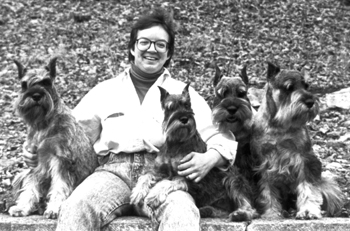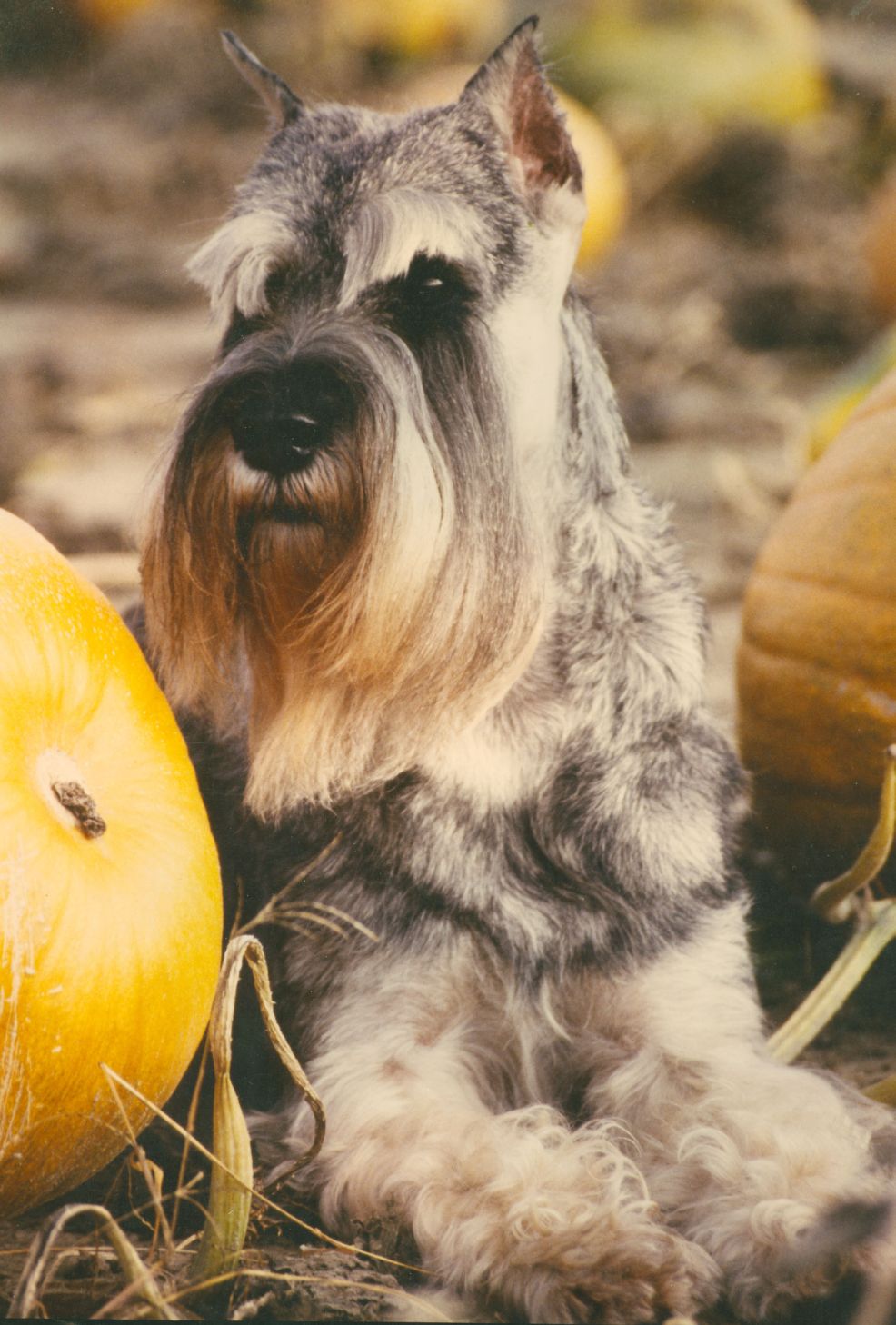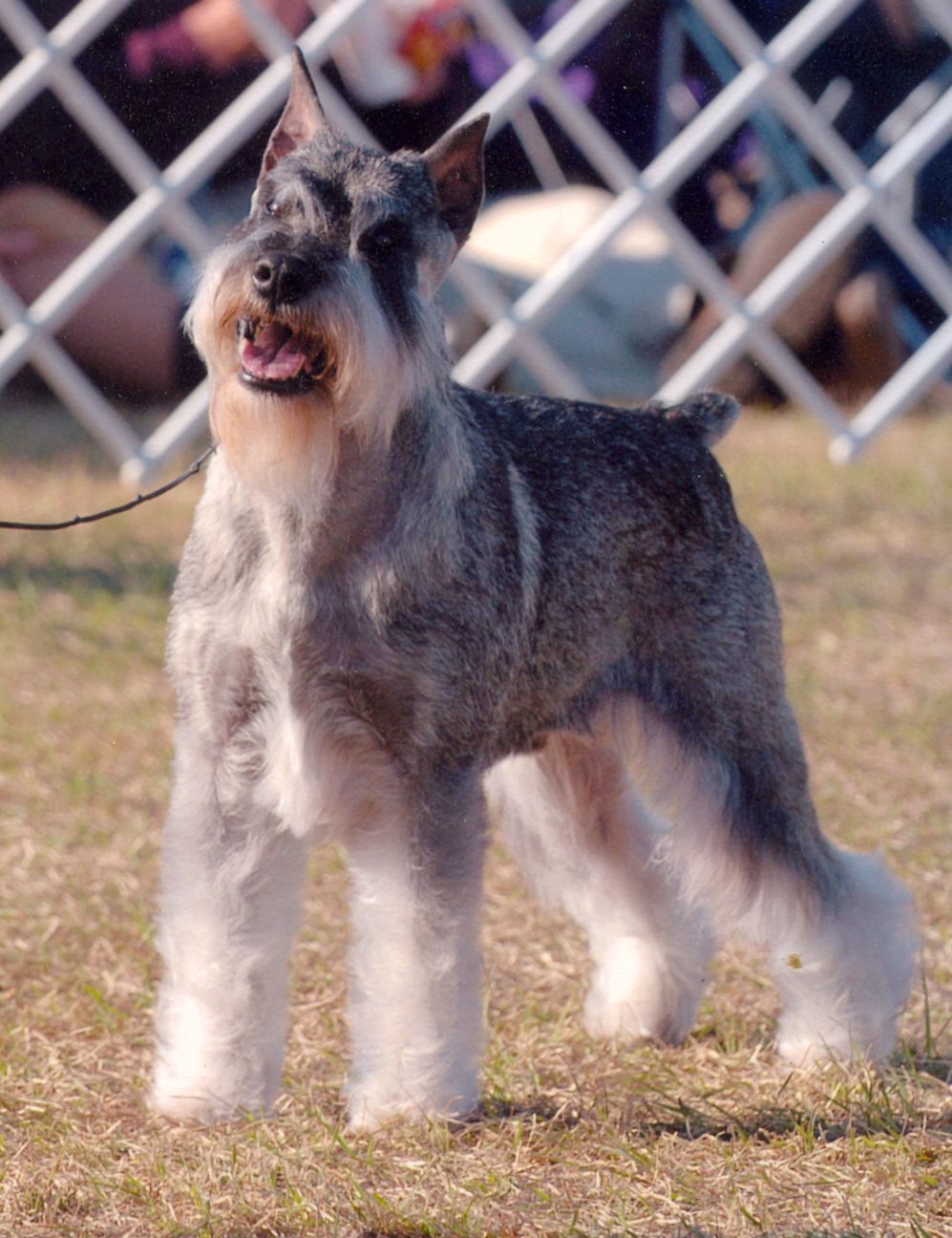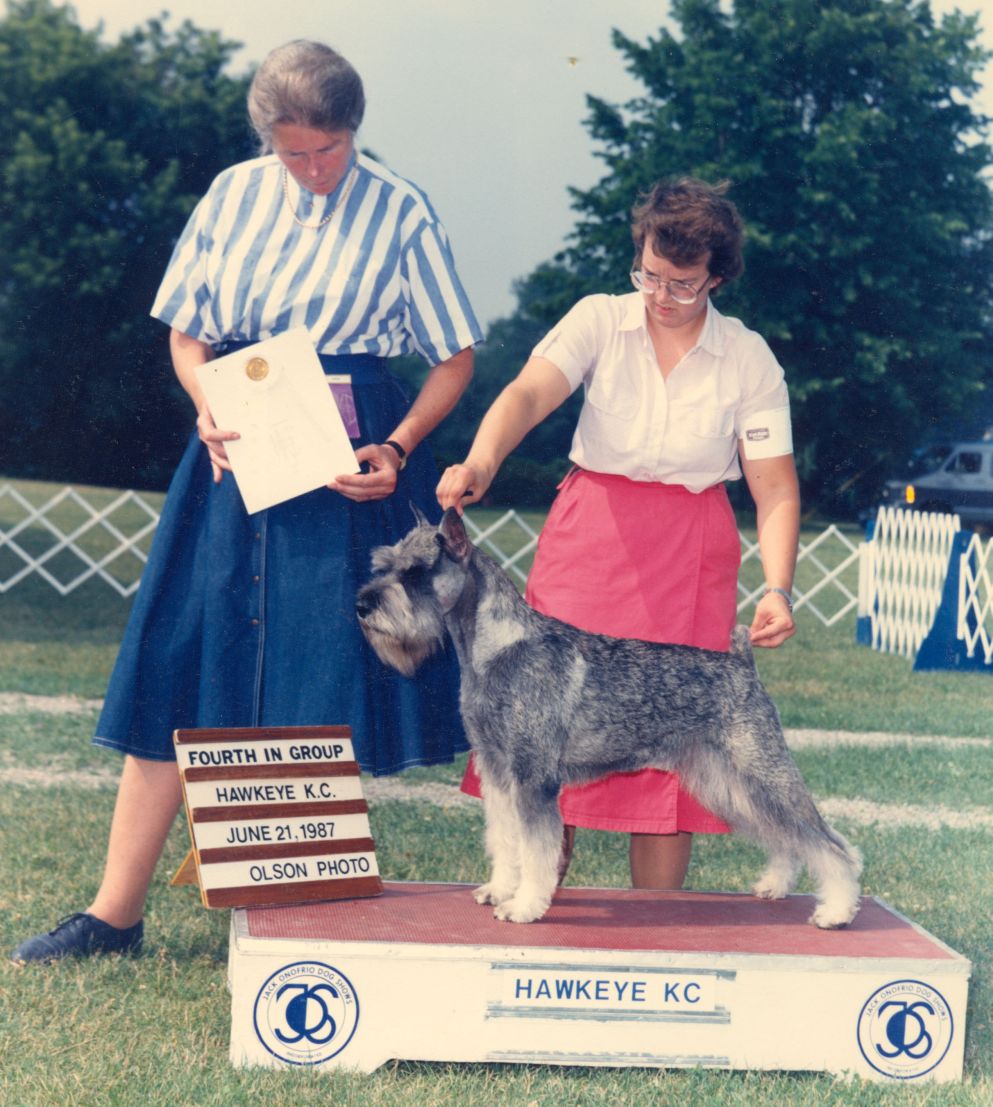In the Lab, In the Ring




Hansen's chemistry teacher should be proud; Hansen has bred seven generations of Standard Schnauzers excelling in the ring and in obedience. Along with Hansen, they have also contributed to genetic research.
Growing up in Eden Prairie, Minnesota, Hansen's family raised horses, an experience that developed keen instincts Hansen could apply to dogs. A scientifically minded girl, she recalls being fascinated by movement. "With horses, you learn to recognize faults – you feel that fault jarring your spine!" Meanwhile, Hansen also showed talent as an illustrator, which gave her opportunities to explore the artistic side of science.
Hansen was also influenced by her uncle, who ran a successful dairy farm. "He kept excellent records, to make sure cows produced enough milk. But he was also concerned about them being sound enough to carry a calf. I absorbed the planning and thinking about what you need to do now for breeding future generations."
Even as an energetic teen, Hansen understood the virtue of patience. She and her sister showed, and learned about breeding science, for five years before breeding Gretel. "We didn't feel we knew enough until we went to national specialties, asked for help, so we could specify our breeding goals. We soaked up everything, talked to everyone we knew who already bred for years."
When they did breed Gretel, the first litter produced five champions. Still in her teens, Hansen admits she and her sister were naïve. "We thought this show stuff was easy! Adults told us we shouldn't expect it to be like this all the time."
One day, Hansen would learn what they meant. In the meantime, she sought greater challenges. "No one told us we couldn't do obedience and conformation at the same time, so we did it. Gretel's first time out, she won points towards a major obedience title."
Higher Learning
When Hansen was ready for college, she chose the nearby University of Minnesota and continued conformation and obedience while earning her degree, and also working at a local veterinary clinic. While holding onto her dream of becoming a scientific illustrator, Hansen took a job as a field biologist with the National Park Service in the St. Croix National Scenic Riverway, over 100 miles from home. One of her Standard Schnauzers, Simon (Gretel's son), traveled with her.
Just 9 months old, Simon was already a champion, in the top 10 of his breed. Hansen was also winning with him in obedience and tracking. But Simon was not on that journey to earn titles. "Simon worked. He had a backpack and carried some equipment, and watched over our campsite and gear while we were gone. He also entertained the other biologists. In the evening, he would play 'chase-me' games and tag with everyone. You could see him establishing the rules and teaching people how to play."
Later, when Simon was at his peak, Hansen took him to a show in Tulsa, where she had her first devastating setback. "I had a number of dogs in my truck, and when I came to get them, I saw that someone poisoned Simon." The dog Hansen called "my best buddy and partner" was dead at just five years old. The only bright spot for Hansen is that she had decided to breed Simon two weeks before the Tulsa show. "I wasn't going to, but I'm glad I did. One girl from the litter demanded she stay with me, so I named her Keeper." Keeper produced 13 champions of her own.
A New Direction
When Hansen was in her 30s, and working as an illustrator in Illinois, she encountered her most serious obstacle--which, strangely, also opened her greatest scientific and professional opportunity: one of her litters produced epileptic puppies. Hansen and her co-breeder were distraught trying to trace the origins. "Between the two of us, we had eight afflicted dogs in two years, where no epilepsy had appeared in 15 years of successful breeding. Not wishing to toss out the good traits in our lines, but determined not to let epilepsy appear again, we began searching for a researcher to help us get to the bottom of it all."
Hansen did not breed another litter for almost six years. Then, while in Columbia, MO, for a dog show, she and her co-breeder met with Dr. Gary Johnson at the University of Missouri College of Veterinary Medicine. Johnson agreed to work with them to search for the mutation causing epilepsy in Standard Schnauzers. "I worked with Dr. Johnson to develop a submission form and protocol to collect samples. I organized data, and started talking to other owners and breeders who had dogs we needed to include in the research." Hansen also helped Johnson write some grant proposals to fund his research, and reached out to the Standard Schnauzer community to encourage participation from other breeders who may have encountered the same problem.
Johnson recognized the value of a science-minded person like Hansen who also mingled naturally with fanciers. "After a year of recruiting samples, Johnson said, 'You have to work for me,' " says Hansen. She was hired as coordinator of veterinary information, and settled in Columbia. "I manage projects, go out and speak to breeders about genetics. An illustrator makes difficult-to-understand concepts easier to visualize. Now I do the same thing with words."
Linking Two Worlds
Immersed in science and dog sports, Hansen has the trust of both worlds. "Someone at a show will say, 'I have a disease in my line, but I'm afraid to admit it. You don't know how judgmental show people are about these things!' I tell them, 'Actually, I do know. I'm in a unique position, and I've walked in your shoes.' "
Hansen's own dogs serve as examples. "Schnauzers are a docked breed. All my dogs' tails are frozen, so their DNA is collected and stored, and available for research."
Hansen draws blood samples at the shows, or she asks people to draw blood at their vet's office and send it to her later. She works in a private area at the shows, respecting breeders' worries about publicizing their involvement in research.
Hansen would not be able to build such trust without successful dogs. One of her Standards, Seasar, was best-in-show at Westminster in 2003 through 2006. That was just his latest success. "He's also the first Standard Schnauzer to win a national specialty, all-breed best-in-show titles, and also earn performance titles."
Just as she did as a teenager, Hansen says she loves expanding beyond the show ring. "Before Seasar was in conformation, he earned tracking and agility titles, and I'm working to have him become the first Standard Schnauzer with a Champion Tracker title."
Seasar retired from the ring this year, but his 2-year-old son, Vegas, shows great promise. "He already has group placements. I'm hoping to take him to Westminster in 2008, and time will tell if he can step into his daddy's shoes." Hansen says Vegas will compete in agility and tracking, and help her communicate with more breeders about research.
Recently, Hansen had a new litter of puppies. "My 100th champion should be in that litter, and they are all going to contribute to research."
